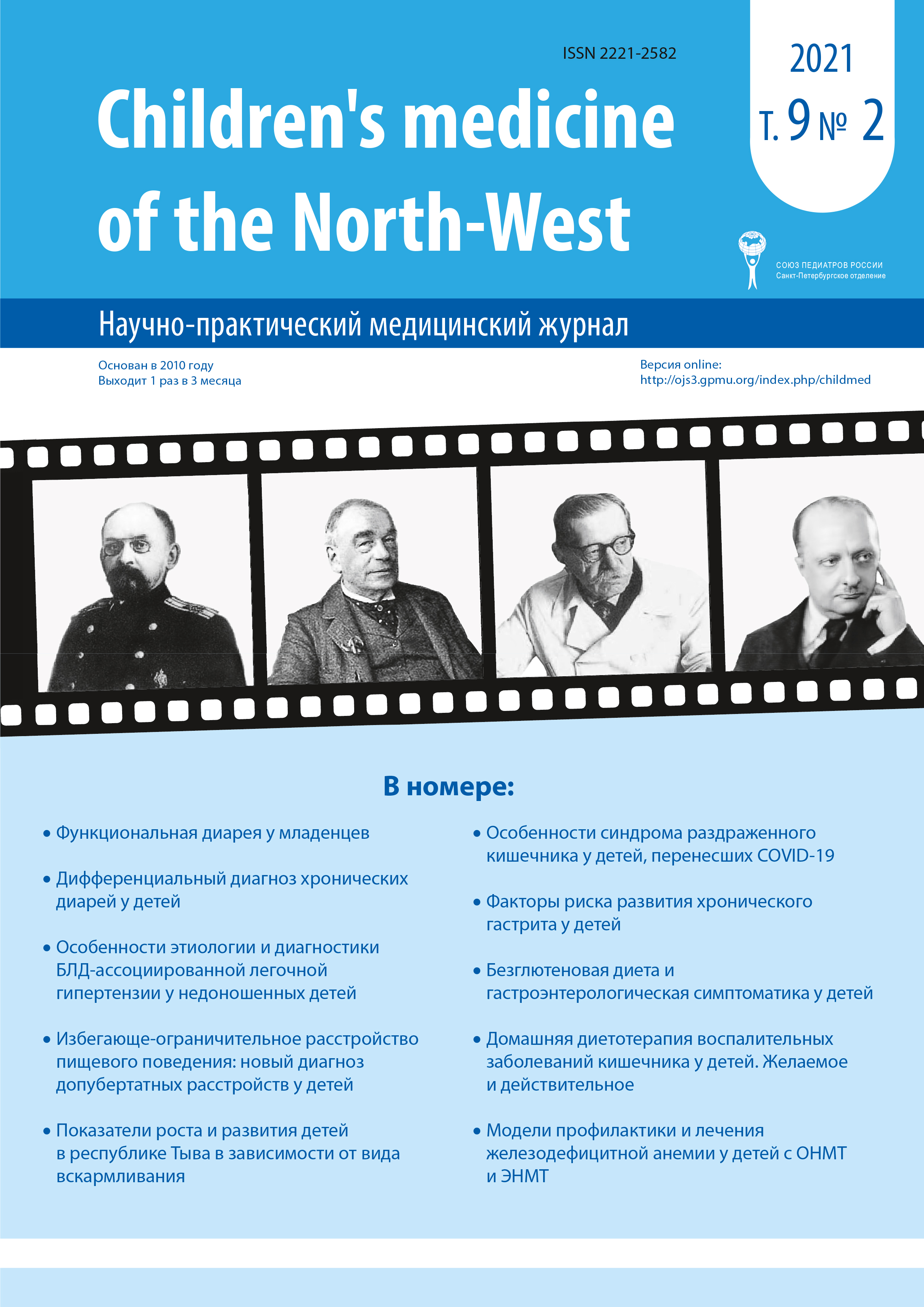RESULTS OF THE WORK OF THE REGIONAL MODEL FOR THE PREVENTION AND TREATMENT OF IRON DEFICIENCY ANEMIA IN CHILDREN WITH VERY LOW AND EXTREMELY LOW BIRTH WEIGHT IN FOLLOW-UP OBSERVATION
Abstract
Background. Anemia of prematurity is in the spotlight, as there is still an unambiguous opinion about a single strategy for the prevention of this condition at the earliest stages. Purposes and tasks. Evaluation of preventive and therapeutic work aimed at preventing the development of anemia in children with very low (Vlbw) and extremely low body weight (Elbw) at birth, prospective analysis of physical development in this group of patients in the follow up. Materials and methods. The study involved 312 newborns with Vlbw and Ebmt who were inpatient treatment from 2015 to 2019. The hemoglobin level and physical development were assessed in the 1st day of life, from 1 to 14 weeks of hospitalization, after discharge - at 3, 6, 9, 12 months of life, 2-5 years. All children who took part in this work received therapy in accordance with the approved Federal clinical guidelines. Results. The average birth weight in group 1 was 866 g, in group 2 - 1320 g. By the time of discharge from the hospital, the average weight in group 1 was 2080 g, in group 2 - 2184 g. At 12 months of age, the average weight in group 1 was 7673 d, in group 2 - 8800 g. When examining the level of hemoglobin in the first day of life, this indicator was 181 g/l in children with Elbw and 193 g/l in children with Vlbw. 4-6 weeks after birth, there was a significant decrease in hemoglobin levels to 112-114 g / l. In the follow up at 3 months of life in both groups, there was a persisting decrease in the hemoglobin level to 108-110 g/l. Conclusions. Compliance with approved protocols can stabilize hemoglobin levels in the future. According to the study, catch up growth allows 70% of children to catch up with their peers in development.



